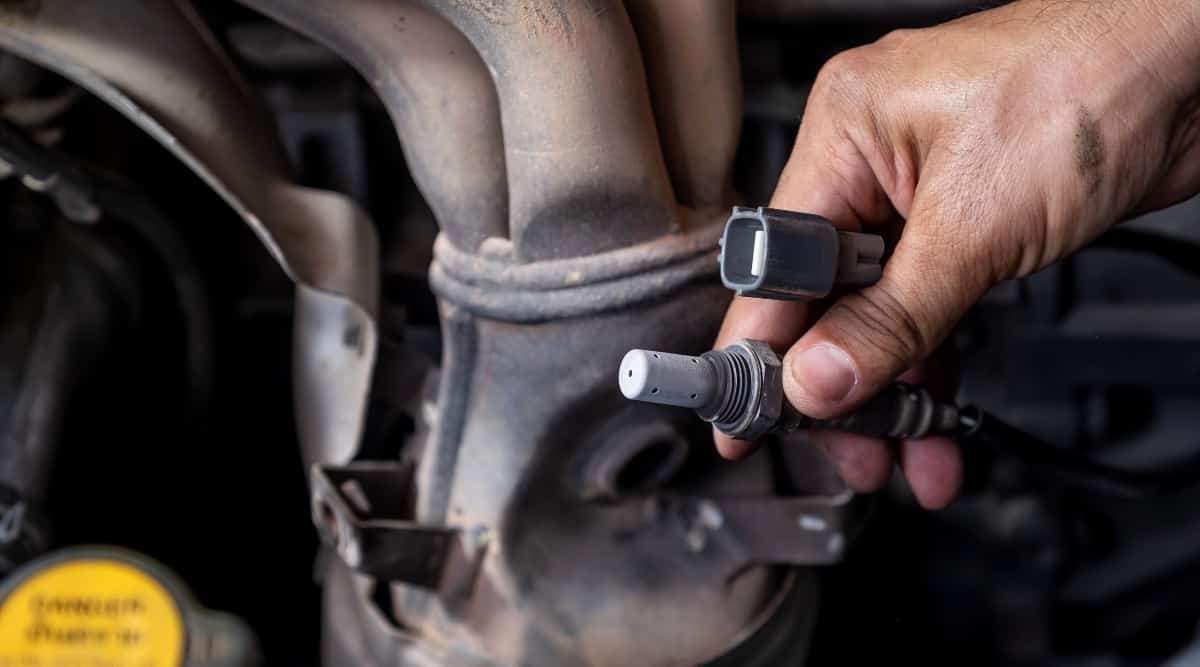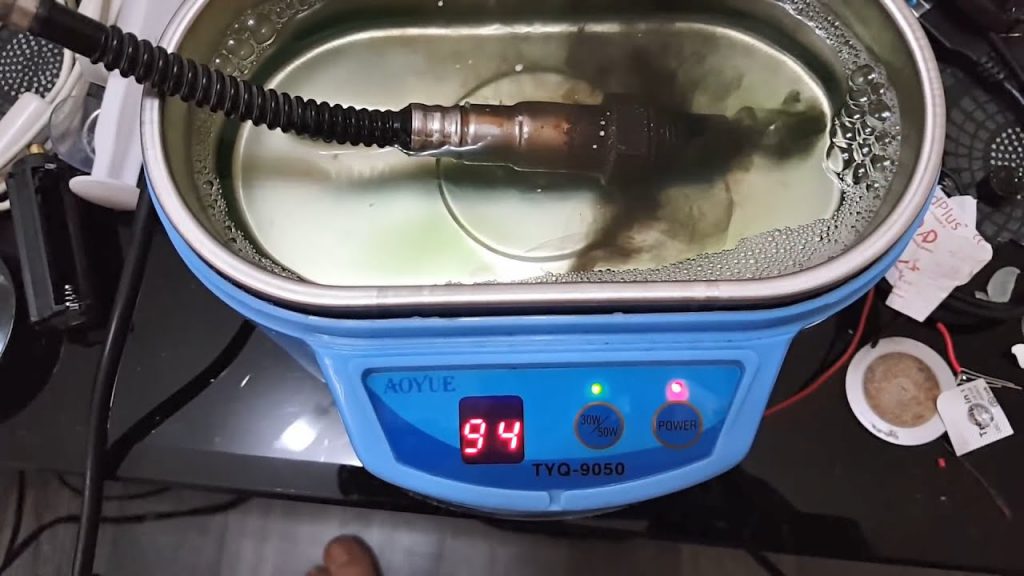Cleaning the O2 sensor in a Toyota involves removing and using a specialized cleaner to remove any carbon build-up, ensuring it functions optimally. When it comes to maintaining your Toyota, cleaning the O2 sensor is crucial for engine efficiency.
Over time, carbon build-up can affect its performance. Regular cleaning with an appropriate cleaner can enhance fuel efficiency and ensure optimal engine operation.
If left uncleaned, a contaminated sensor can lead to issues such as poor fuel economy and increased emissions.
Therefore, it’s essential to understand the cleaning process for the O2 sensor in your Toyota to keep it in top condition. t
We’ll provide a comprehensive guide on how to effectively clean the O2 sensor in your Toyota.
O2 Sensors in Toyota Vehicles Overview
An oxygen sensor, also known as an O2 sensor, plays a crucial role in monitoring the air-fuel mixture in your Toyota vehicle. It measures the amount of oxygen in the exhaust gases and sends this information to the engine control unit (ECU).
This data is used to adjust the fuel injectors’ pulse width to maintain the optimal air-fuel ratio.
Oxygen Sensor Location:
The exact location of the oxygen sensor in your Toyota depends on the model and year. Generally, you can find it either on the exhaust manifold, near the catalytic converter, or in the exhaust pipe. Refer to your vehicle’s manual or consult a professional to locate it accurately.
Oxygen Sensor Codes:
When there is a problem with the oxygen sensor, your Toyota’s onboard diagnostic system may generate specific trouble codes.
These codes can indicate issues such as a malfunctioning or dirty oxygen sensor. Use a scan tool to retrieve the codes and troubleshoot the problem accordingly.
If you understand how an oxygen sensor works, locating its position in your Toyota, and decoding oxygen sensor codes will help you diagnose and resolve any issues with your vehicle’s O2 sensor.

Signs That The Oxygen Sensor Needs Cleaning
When the check engine light comes on, it could indicate a problem with the oxygen sensor. Another key sign is a noticeable loss of fuel efficiency, which may be attributed to a dirty oxygen sensor.
Additionally, if you notice a sulfur or ‘rotten egg’ smell from the exhaust, it could be an indicator that the oxygen sensor needs cleaning.
Another noticeable sign of a dirty oxygen sensor is the presence of black smoke from the exhaust, which can be an alarming sign.
Looking at emission levels, if they reach high levels, it may point to a dirty oxygen sensor.
Furthermore, if your engine hesitates, skips, or buckles, it might be a sign of a malfunctioning oxygen sensor.
Benefits Of Cleaning The Oxygen Sensor
Cleaning the oxygen sensor in a Toyota can bring several benefits. Improving fuel efficiency is one of the key advantages, as a clean sensor allows for more accurate air-fuel ratio measurements.
This can lead to reduced harmful emissions, which is beneficial for the environment and compliance with emission standards.
Additionally, a clean oxygen sensor contributes to the preservation of the catalytic converter, preventing potential damage or premature failure.
Maintaining a clean oxygen sensor is essential for optimal engine performance and longevity.
Methods For Cleaning O2 Sensors
When it comes to cleaning O2 sensors in Toyotas, there are a few methods that you can try. Cleaning the outside of the sensor is one option, and this can be done using an ultrasonic cleaner or oxygen sensor cleaner products.
Using an Ultrasonic Cleaner: An ultrasonic cleaner is a device that uses high-frequency sound waves to create tiny bubbles in a liquid cleaning solution.
These bubbles then remove dirt and debris from the surface of the sensor.
Simply soak the sensor in the cleaning solution and let the ultrasonic cleaner do its job.
Using Oxygen Sensor Cleaner Products: There are also specific products available that are designed to clean oxygen sensors.
These products typically come in spray or liquid form and can be applied directly to the sensor.
Make sure to follow the instructions on the product label for best results.
By cleaning the outside of your O2 sensor, you can help improve its performance and extend its lifespan.
It is recommended to clean your oxygen sensor periodically, depending on your driving conditions and vehicle usage.
Keeping your sensor clean can result in better fuel efficiency and emissions control.
When To Replace The Oxygen Sensor
When it comes to cleaning the O2 sensor in a Toyota, it is important to know when to replace it. Regularly cleaning the sensor can help maintain its functionality and improve fuel efficiency.
| When to Replace the Oxygen Sensor |
|---|
|
A significant performance issue that indicates the need for replacing the oxygen sensor is when the check engine light continues to illuminate. This is a clear indication that the sensor is not functioning properly. Additionally, if your vehicle fails to meet emission standards during an inspection, it may be due to a faulty sensor. The oxygen sensor plays a crucial role in monitoring the air-fuel ratio and ensuring optimal engine performance. If it is not working correctly, it can lead to decreased fuel efficiency, black smoke from the exhaust, and engine hesitations or surges. When you notice these issues, it’s important to replace the oxygen sensor to restore your vehicle’s performance and meet emission requirements. |


Frequently Asked Questions On How To Clean O2 Sensor Toyota
Can An 02 Sensor Be Cleaned?
Yes, an O2 sensor can be cleaned as regular maintenance. Cleaning the outside of the sensor can help improve its performance and prolong its lifespan. However, it is important to note that if the sensor is severely contaminated or damaged, it may need to be replaced.
Regular cleaning can help prevent issues and ensure optimal functioning.
Can You Spray Wd-40 On O2 Sensor?
Do not spray WD-40 on O2 sensors. It may damage them and cause malfunction.
Is There A Fuel Additive To Clean O2 Sensor?
Yes, there are fuel additives like Cataclean that can clean O2 sensors, reducing carbon build-up and improving performance.
Conclusion
To conclude, cleaning your O2 sensor is a simple and effective way to maintain optimal performance in your Toyota. By following the step-by-step process outlined in this guide, you can ensure that your sensor remains free from carbon build-up and functions properly.
Regularly cleaning your O2 sensor can improve fuel efficiency, reduce emissions, and prolong the lifespan of your sensor.
So don’t overlook this important maintenance task and enjoy a cleaner and more efficient Toyota.
